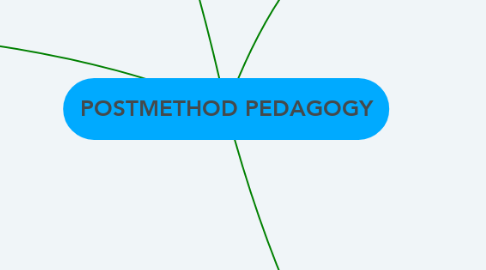
1. MACROSTRATEGIES
1.1. Are general plans derived from currently available theoretical, empirical, and pedagogical knowledge related to L2 learning and teaching
1.1.1. 1. Maximize learning opportunities
1.1.2. 2. Facilitate negotiated interaction
1.1.3. 3. Minimize perceptual mismatches
1.1.3.1. 1. Cognitive
1.1.3.2. 2. Communicative
1.1.3.3. 3. Linguistic
1.1.3.4. 4. Pedagogic
1.1.3.5. 5. Strategic
1.1.3.6. 6. Cultural
1.1.3.7. 7. Evaluative
1.1.3.8. 8. Procedural
1.1.3.9. 9. Instructional
1.1.3.10. 10. Attitudinal
1.1.4. 4. Activate intuitive heuristics
1.1.5. 5. Foster language awareness
1.1.6. 6. Contextualize linguistic input
1.1.7. 7.Integrate language skills
1.1.8. 8. Promote learner autonomy
1.1.9. 9. Ensure social relevance
1.1.10. 1o. Raise cultural consciousness
2. THE MACROSTRATEGIC FRAMEWORK
2.1. MICROSTRATEGIES
2.1.1. Are classroom procedures that are designed to realize the objetives of a particular macrostrategy
2.1.1.1. N° 1. Language use and levels of formality.
2.1.1.2. N° 2. Language use and doublespeak
3. THE THREE-DIMENSIONAL FRAMEWORK
3.1. THE INTRALINGUAL-CROSSLINGUAL DIMENSION
3.1.1. INTRALINGUAL
3.1.1.1. Strategy adheres to the policy of coordinate bilingualism. Two languages systems are kept completely separate from one another
3.1.2. CROSSLINGUAL
3.1.2.1. Compound bilimgualism. The L2 is acquired and know through the use of L1
3.1.3. CONCLUSION
3.1.3.1. Intralingual or a Crosslingual strategy should be decided in relation to the goals of the learners
3.2. THE ANALYTIC-EXPERIENTAL DIMENSION
3.2.1. EXPERIENTAL
3.2.1.1. Focus on comunication message centered participation
3.2.1.1.1. To use the language for a purpose
3.2.2. ANALYTIC
3.2.2.1. Focus on code medium centered observation
3.2.2.1.1. Grammar, vocabulary, notions and funtions
3.3. THE EXPLICIT-IMPLICIT DIMENSION
3.3.1. EXPLICIT
3.3.1.1. Helps learner focus on the characteristics of the language.
3.3.1.2. Helps learners focus on the characteristics of the language
3.3.2. IMPLICIT
3.3.2.1. Take into account the fact that language is much to complex to be fully described
4. THE EXPLORATORY PRACTICE FRAMEWORK
4.1. By Allwright. Exploratory teaching is a matter of trying to find out what makes the tried and trusted ideas successful.
4.1.1. The principles of EP
4.1.1.1. N° 1: Put "quality of life" first.
4.1.1.2. N° 2: work primaly to understand language classrroom life.
4.1.1.3. N° 3: Involve everybody.
4.1.1.4. N° 4: work to bring people together.
4.1.1.5. N° 5: work also for mutual development.
4.1.1.6. N° 6: Integrate the work for understanding into classroom practice.
4.1.1.7. N° 7: Make the work a continuous enterprise.
4.1.2. The practice of EP
4.1.2.1. #1: Identify puzzle (ploblem).
4.1.2.2. #2: Reflecting upon the puzzle.
4.1.2.3. #3: Monitoring (group work).
4.1.2.4. #4: Taking direct action to generate data.
4.1.2.5. #5: Considering the outcomes reached so for, and deciding what to do next.
4.1.2.6. #6: Moving on.
4.1.2.7. #7: Going public.
4.1.2.7.1. Thinking globally, act locally, think locally
4.1.3. The global and the local
